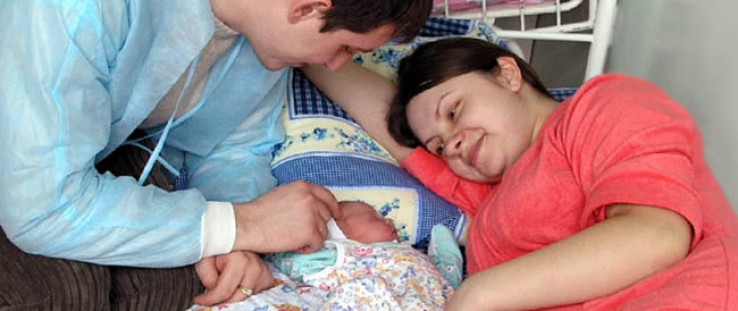 Natalia and Alexei Voinerovsky are enjoying the company of their newborn son in a postpartum ward of the Oblast Maternity Hospital in the Donetsk region of Ukraine.
Natalia and Alexei Voinerovsky are enjoying the company of their newborn son in a postpartum ward of the Oblast Maternity Hospital in the Donetsk region of Ukraine.
Natalia and Alexei Voinerovsky are enjoying the company of their newborn son in a postpartum ward of the Oblast Maternity Hospital in the Donetsk region of Ukraine.
Natalia and Alexei Voinerovsky are enjoying the company of their newborn son in a postpartum ward of the Oblast Maternity Hospital in the Donetsk region of Ukraine.
 Natalia and Alexei Voinerovsky are enjoying the company of their newborn son in a postpartum ward of the Oblast Maternity Hospital in the Donetsk region of Ukraine.
Natalia and Alexei Voinerovsky are enjoying the company of their newborn son in a postpartum ward of the Oblast Maternity Hospital in the Donetsk region of Ukraine.
Natalia and Alexei Voinerovsky are enjoying the company of their newborn son in a postpartum ward of the Oblast Maternity Hospital in the Donetsk region of Ukraine.
Natalia and Alexei Voinerovsky are enjoying the company of their newborn son in a postpartum ward of the Oblast Maternity Hospital in the Donetsk region of Ukraine.
Fear and anxiety filled Natalia Voinerovskaya’s heart as she was preparing to deliver her second baby. Seven years ago, while delivering her first son, she had postpartum bleeding and nearly died. Doctors fought hard to save her life and stopped the bleeding after an hour of medical intervention.
At the time of her first delivery, Voinerovskaya’s husband was not allowed in the delivery room—a standard post-Soviet birthing practice.
This time, however, her worries were unfounded. While delivering her second baby at the Oblast Maternity Hospital in the Donetsk region of Ukraine last October, she couldn’t help but smile.
“This time it was completely different,” said Voinerovskaya. “My husband helped me during the delivery. And though I was still scared, there was no bleeding. Later, I learned that it was due to the oxytocin that doctors injected and some manipulations right after I delivered my son.”
Today, both sons are healthy—just like their mom.
Postpartum bleeding remains a major cause of maternal mortality in transitional and developing countries. Through USAID’s Maternal and Infant Health Project, however, postpartum bleeding at the Donetsk Oblast Maternity Hospital has decreased from 3.7 percent in 2003 to 0.85 percent in 2010.
Ukraine maternal deaths still remain high—three to four times higher than EU countries. In 2009, the maternal mortality rate in Ukraine was 25.4 per 100,000 live births compared to 1.65 in Estonia, 2.62 in Austria, or 1.62 in Norway. For this reason, the USAID project has been working in Ukraine for eight years to improve perinatal care and change health-care providers’ outdated practices and attitudes toward internationally recognized obstetric guidelines and protocols.
Implemented first in four pilot maternities in 2003 in the cities of Lviv, Volyn, Donetsk, and Simferopol, the project is currently working in 184 maternity hospitals across 19 oblasts of Ukraine and the Autonomous Republic of Crimea. Fifty-four percent of all births in Ukraine take place in USAID-assisted maternities.
Among the most important procedures for controlling postpartum bleeding is active management of the third stage of labor followed by close monitoring and supervision of uterus tone.
The active management technique includes three major steps: administration of oxytocin (a drug to help the uterus contract) within a minute after birth; delivery of the placenta by a special procedure, which involves gently pulling on the umbilical cord; and a special massage of the uterus after delivery.
“I was convinced that injecting oxytocin alone, as we did in the past, was enough to prevent bleeding at birth,” said Anna Chaika, the head physician of Rivne Maternity Hospital #2. “However, many women were losing more than 1,000 grams of blood during the postpartum period, and some of them were on the verge of life and death. It took time for me personally to accept and properly follow all the steps of the active management technique. I immediately noticed that the blood loss had significantly decreased.”
Initially, Ukrainian health-care providers balked at the new techniques USAID helped pilot; it was a challenge to convince them that evidence-based, simple technology could prevent bleeding. Inheritance of long-held Soviet obstetric practices along with prominent Soviet professors’ conservatism convinced the providers that the old ways were best. But through follow-up trainings and visits to maternity hospitals under the project, doctors began to see results and to come around to implementing the new techniques.
“Companion presence, individual delivery rooms, free position during labor and delivery, non-medical interventions, and active management of the third stage of labor as well as early skin-to-skin contact and non-separation of mother and a baby after delivery—these are the practices we never thought of eight years ago. Thanks to USAID, Ukrainian families are happier and willing to have more babies,” said Lyuba Polyakova, the midwife of Donetsk Maternity Hospital #3.







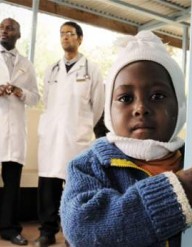

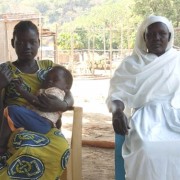
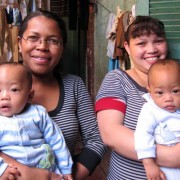
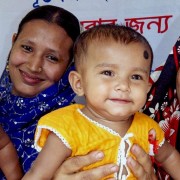
Comment
Make a general inquiry or suggest an improvement.